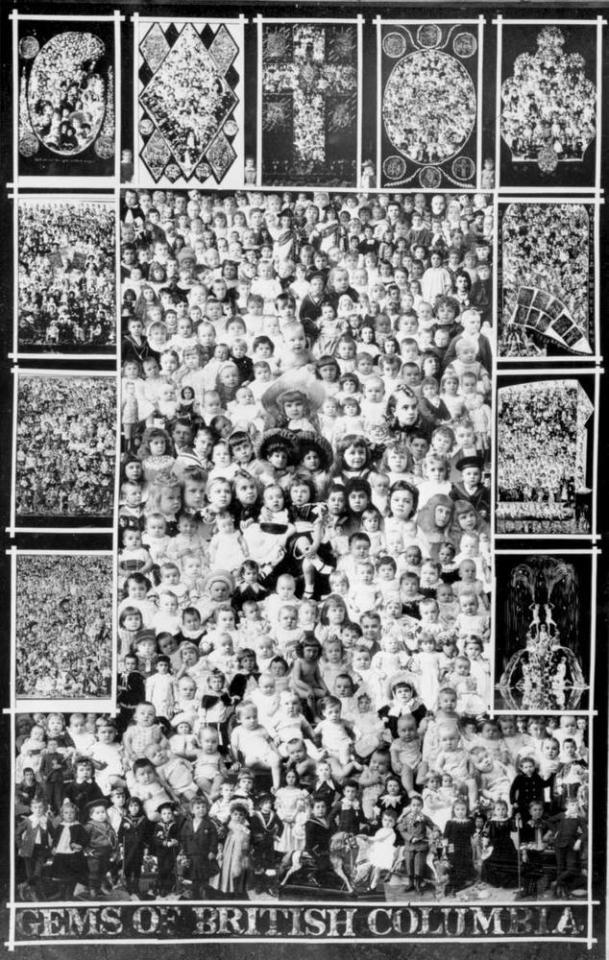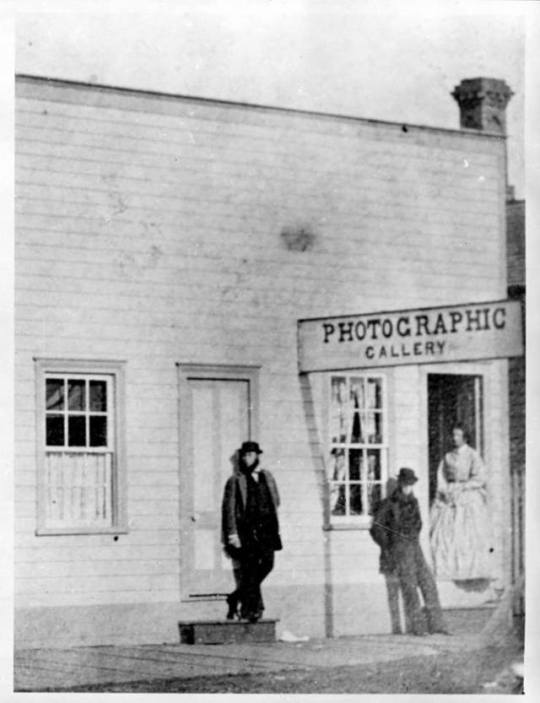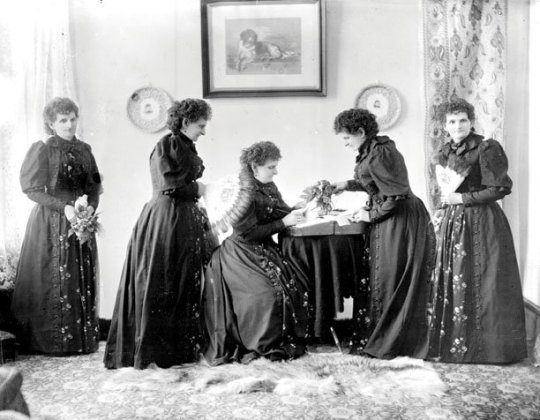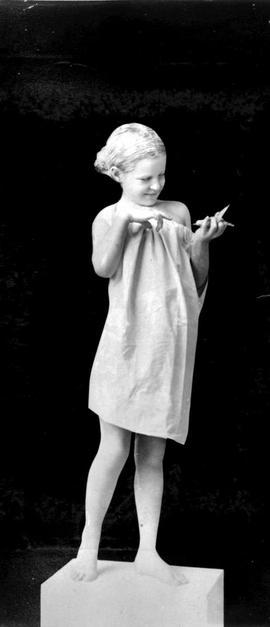This blog examines the work of Hannah Maynard with a specific look at the effects of gender equality on her work and her relationship with photographic history, both technically and in relation to the styles of photomontage and photosculpture. To properly enjoy this blog, it's suggested to scroll through it for a chronological experience. To locate posts pertaining to individual topics, select the links below. Biography | Gender | Photographic History | Photomontage | Maynard's Photosculpture
Don't wanna be here? Send us removal request.
Photo

Maynard. Hannah, Gems of British Columbia, 1891
0 notes
Text
Hannah Maynard’s Legacy
Hannah Maynard was a Canadian photographer famous for experimenting with new camera techniques and mastering skills of photomontages. An important part of British Columbia’s heritage especially in Victoria B.C, she is credited for opening the first photography store in Victoria. Hannah was born in Bude, Cornwall in 1834, and immigrated to Canada in 1852 with her husband Richard Maynard.
Hannah most impressive feat is learning photography through experimentation and trial and error. In a time where camera’s had minimal functions and needed multiple tools to take proper photos, Hannah was able to master them through practice in her store. Using techniques such as time-lapse imaging, double exposures, multiple exposures, lighting and photomontages, her curiosity and passion continuously pushed her to learn different techniques that are evident in her pictures today. Hannah began by taking simple landscape photos with Richard, but slowly moved towards portrait photos. In her collection “Gems of BC” she was able to take roughly 22,000 portraits of children within Victoria. Hannah soon mastered the art of “cut and paste” by cropping the faces of each portrait and pasting them on a separate sheet creating small postcards for people. Hannah furthered her photomontages by adding faces inside sunflower heads, forming a water fountain using portrait photos, and even creating the leaves of a plant using faces. Hannah later moved on to multiple exposures, combining multiple shots into one image. Hannah utilized this by taking pictures of herself in different positions to create an illusion to the audience. Through these multiple techniques, it is possible to gauge how Hannah has evolved and grown throughout her years of being a photographer. From moving from simple landscapes to intricate multiple exposures including herself as a subject.
Through Hannah’s curiosity and devotion to photography, she has been able to change the culture in Victoria through her photomontages, and pushing boundaries of photography using multiple exposures. Hannah has been able to document the progress of Victoria through her “Gems of BC” collection which plays an integral part in developing Victoria into the city it is today. Ultimately, Hannah’s passion for experimentation has created many opportunities for people in Victoria to witness emerging photographic techniques.
0 notes
Photo

Maynard. Hannah, Richard and Hannah Maynard, c. 1885.
0 notes
Photo

Maynard. Hannah, A Multiple Exposure Self Portrait, 1890.
1 note
·
View note
Text
Gender Inequality in the Victorian Era and its Affect on Hannah Maynard’s Work
As a female photographer and businesswoman during the Victorian era, Hannah Maynard suffered from several setbacks as a result of the gender inequality present within contemporary society. The standards for women in the 19th century expected them to almost exclusively attend to domestic matters and entrepreneurship was discouraged. Despite these beliefs, Maynard was able to excel as a well-recognized artist and had independently established a trusted and successful photographic gallery, studio and store. In the early stages of her career, her store had been boycotted by the community due to her gender and her work was often mis-credited to her husband, Richard Maynard. However, by the end of her career, she had earned the respect of the public as one of the only two female photographers in British Columbia by using her clever business skills, innovative photography and perseverance. An example of her talent both as an artist and an entrepreneur is the piece “Gems of B.C.”. For this piece, Maynard took photos from all of the children she had photographed over the year and assembled them into a unique collage to be sent out annually to her customers, showing the children to be valued as gems. This project was strong as it gained her recognition and respect, it displayed her ingenuity as an artist and the alignment between children and precious gems was one used to play to the maternal values of many of her customers, furthering her career success in a misogynist society.
0 notes
Photo

Richard and Hanna Maynard outside of Mrs. Maynards studio, (188-)
Hannah Maynard’s own store which was an important milestone for a woman entrepreneur during Victorian Era.
0 notes
Photo

Hannah Hatherley Maynard's photographic studio in Victoria. Hannah is standing in the doorway, 1863.
0 notes
Photo

Maynard, Hannah. Richard and Hannah Maynard's daughter, Laura Lillian, known as Lillie; born 1867, died 20 Dec 1883., 1874.
0 notes
Text
Camera’s Technological Development
What is extraordinary about Hannah Maynard’s Gems of BC is how photo editing technology was unavailable in the late 1800s. Thus, this photomontage piece was composed by having to individually cut out pictures of each child and collage them together, requiring a great amount of time and perseverance. Considering how this concept of photomontage was a newly invented laborious technique which today from modern technology can be easily generated through photo editing apps, the development of photography itself was also a process that stemmed from previous ideas which were perfected and made more feasible. Below is a timeline of where progressions in camera technology were introduced and how it overall affected media industries’ outreach to their audiences.
9th Century - Ibn-Al Haytham
Invented “Camera Obscura” which was a technique where a image outside could be projected in a dark room through a small hole.
1724 - Johann Heinrich Schultz
Found a way to temporarily retain these projected images by exposing silver compounds to light. However, the images would fade soon after exposure.
1827 - Nicéphore Niépce
Further projected these images onto light sensitive surfaces that retained them, even after exposure.
1839 - Louis Daguerre
Invented the Daguerreotype which used a silver plating that produces sharper images.
1841 - Henry Fox Talbot
Allowed many copies of photographs to be made on paper.
1888 - George Eastman
He invented plastic roll film that could fit inside small, inexpensive cameras that were handheld.
This development of camera technology further brought along the invention of television, which involves the transmission of images through wires and radio waves which are converted by electrical pulses. In the United states, this gained extreme popularity during the early 1950s. 178,000 television sets were sold in 1947, allowing viewers to access moving pictures whilst at home. As a result, visual media overtook other mediums such as radio, newspaper, and the telegraph in efficiency in outreach to audiences.
0 notes
Photo

Daguerre. Louis-Jacques-Mandé, Boulevard du Temple, 1838.
Example of a “Daguerreotype” photograph
0 notes
Photo

Maynard. Hannah, Gems of British Columbia, 1890.
New concept of the handmade photomontage
0 notes
Photo

Maynard. Hannah, Unknown Title, circa 1890.
0 notes
Text
Photomontage in the 19th Century
Hannah Maynard’s “Gems of British Columbia” series is considerably one of her most notable work as well as celebrated photomontage from the 19th C. in Canada. Photomontage as a movement wasn’t really deemed a style until the twentieth century by the dadaist movement. What is important to note though is that this style of layering photographs on top of other ones, as well as techniques such as double printing, composite photographs, and double exposure has been around since early on after the invention of the camera. This style of photography was a portal into the creative minds of artists such as Maynard and further expanded the boundaries of what art could be. Although this style found great popularity in the twentieth century, initially photomontage images were perceived as comical rather than a true art form; they were referred to as trick photography. Often times the presented photographs of this century were portraiture. With the rising trend of photomontage, portraiture took on a more personalized interpretation to these images as a way to help artists create a signature photography style. The photomontages produced in the Victorian era had elements such as surrealism which allowed for greater expression and more in depth meaning to the photographs which represented the lives of the artists. This new trend of photography was the gateway into how people began to play with ideas and concepts as a form of artistic freedom. Not only was it interesting imagery but the emphasis on the lives of the artists and how they could represent that in a symbolic way, altered how people interacted with art at this time. The beginning of photomontage in the 19th century significantly shifted the path of photography and laid down the path for the new wave of photomontages as seen in dadaism.
0 notes
Photo




Maynard. Hannah, Gems of British Columbia, series, 1880-1893
0 notes
Photo

Maynard. Hannah, Five Shots of Hannah Maynard, Multiple Exposure, ca.1893
0 notes
Photo

Maynard. Hannah, Statuary from Life; girl with bird, 1884.
0 notes
